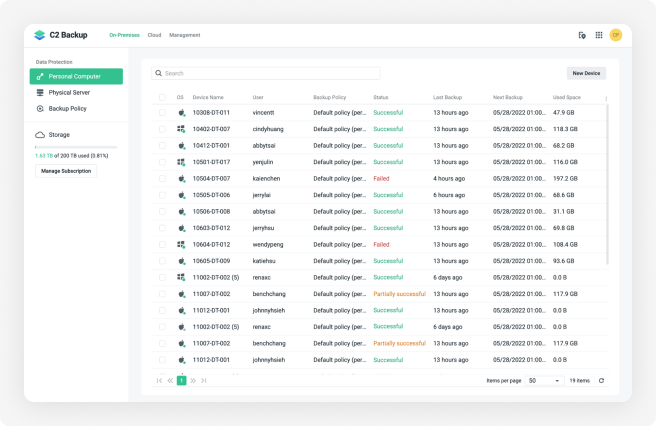Syncing your data is an essential step that many users and businesses implement on a regular basis. However, note that syncing your data does not equate to backing up your data. Syncing your data also does not guarantee that your data can be recovered in the event of a disaster.
In this blog post, let’s find out the differences between syncing and backing up your data:
What is data synchronization and how does it work?
When managing your data, a lot of users assume that data synchronization is equivalent to data backup. That couldn’t be farther away from the truth. It’s important to recognize that there is a big difference between the two.
With synchronization, your data is synced up (not backed up) between two devices. If any changes have been made to the data, it will be reflected on both devices. Any previous versions of your data will be removed. In the face of a disaster, this means that synchronization does not guarantee that previous versions of your data can be recovered.
Even though syncing up your data is a convenient way to ensure that a copy of your data is consistently up to date on two or more devices, it is important to understand the fundamental differences between synchronization and backups, in regards to data protection.
What’s the difference between syncing and backing up your data?
A synchronization service is usually used to sync data between a cloud service and a physical device. The service also ensures that your data is constantly updated and can be accessed with convenience. With a synchronization service, data is synced across cloud services and devices, with both destinations containing two identical sets of data at all times.
The advantage of syncing your data is that it is up-to-date and readily available at all times. However, it is important to note that any deletions made on one data set will be reflected on the second data set. This means that data restoration of previous versions of data stored in the cloud is impossible.
It is possible that certain services, such as OneDrive, may allow users to restore files from the recycle bin, though this is not an ideal way to restore previous versions of your data, in case a disaster strikes.
In comparison, backup services can create duplicate copies of your data and store copies on a secondary backup destination (such as a hard drive, a Synology server, or in the cloud). As backup services maintain multiple versions of your data, this makes it possible to restore your data to a previous point in time so that you can retain a previous version of your data, if needed.
Some backup services also offer flexible retention policies as well as scheduled or event-based backups. This allows you to customize your backup configurations.
Why syncing is not enough
Services such as Google Drive, Dropbox, and OneDrive, provide individuals and businesses with the option to continuously keep their data in sync between two or more devices. Synchronized data is then stored in an authorized data repository which allows users to access their data remotely via devices such as PCs, Macs, smartphones, and tablets.
Even though data synchronization allows team members to be on the same page and collaborate, even when working remotely, this also makes it all the easier for anyone to edit or delete important company documents. With synchronization in place, this may result in permanent data loss if the original file version was not backed up. This is not to say the backups and syncing cannot be used together to complement one another.
Time to back up your data
There are several advantages of backing up your data. It allows for immediate access to your data, without the need to worry about losing your data permanently. Users can easily back up device configurations, file systems, single files, and folders, monitor backup status, or restore their data at any time.
In addition, backup services use versioning capabilities to maintain multiple versions of your data which can be accessed and restored whenever needed. Users can also set custom retention policies that optimize storage capacity and backup schedules that allow data to be backed up automatically.
Secure Your Data with C2 Backup

With C2 Backup, users can use this Backup as a Service (BaaS) solution to directly safeguard their data in the cloud. Rest assured as your data is protected with military-grade AES-256 bit encryption and client-side encryption to ensure that your data is safe when at rest and during transmission. End-to-end encryption will be implemented for Windows device backup while server-side encryption will be used for Microsoft 365 accounts.
C2 Backup comes with a host of benefits such as complete device backup and restoration, support for backup versioning, and custom retention policies in which a minimum of 60 data versions are preserved. With the help of incremental backups, C2 Backup can back up changed data only. This frees up storage space and minimizes the time needed to back up your data.
That’s not all. C2 Backup also allows users to customize a backup schedule based on their convenience or set trigger-based backups.
With a data durability rate of 99.999999999%, C2 Backup ensures that your data remains available at all times. Safeguard your data in the cloud with C2 Backup today.
